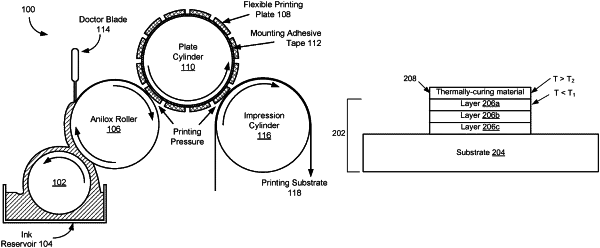| CPC H10K 71/00 (2023.02) [H10K 50/125 (2023.02); H10K 50/15 (2023.02); H10K 50/171 (2023.02); H10K 71/441 (2023.02); H10K 71/611 (2023.02); H10K 50/11 (2023.02); H10K 50/81 (2023.02); H10K 50/82 (2023.02)] | 16 Claims |

|
1. A method, comprising:
providing a stack of layers including:
a substrate and one or more electronically-active layers disposed on a surface of the substrate; and
a thermally-curable layer of organic material comprising a polymer or polymerizable material applied over the one or more electronically-active layers, including a respective organic layer of the one or more electronically-active layers; and
illuminating, for less than a thermalization time of the stack of layers, a surface of the stack of layers to initiate a non-equilibrium thermal process that includes raising a temperature of the thermally-curable layer of organic material, comprising the polymer or polymerizable material, above a first temperature for a length of time sufficient to polymerize and/or cross-link the thermally-curable layer of organic material while maintaining the one or more electronically-active layers, including the respective organic layer, below a second temperature that is less than the first temperature, wherein:
the one or more electronically-active layers is robust to temperatures below the second temperature, and
the second temperature is a glass transition temperature for the respective organic layer in the one or more electronically-active layers.
|